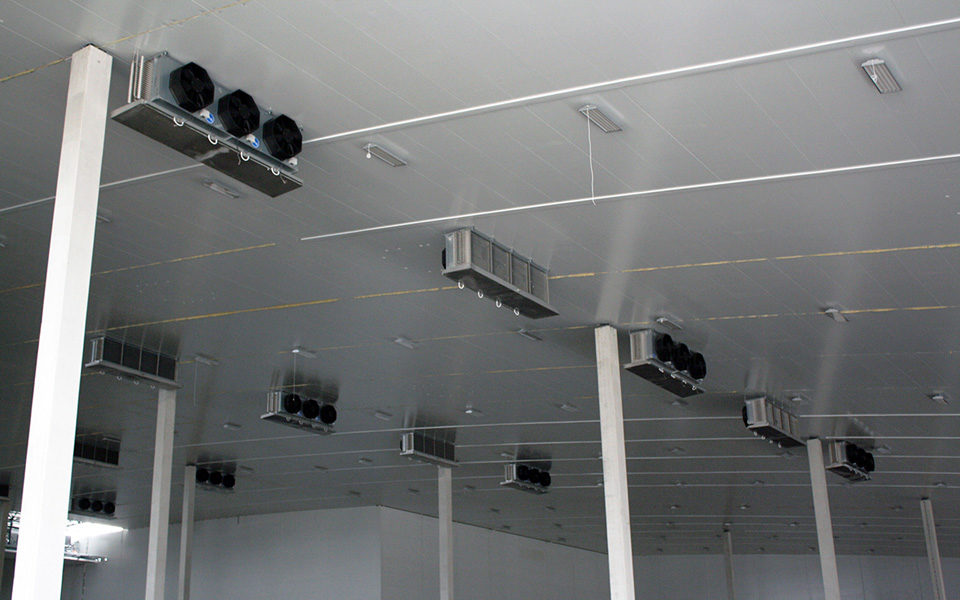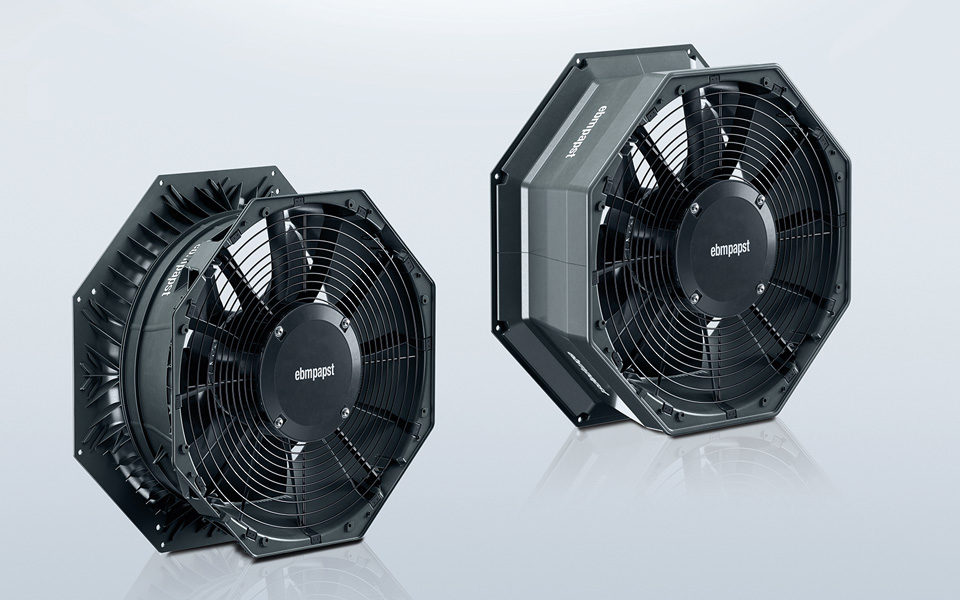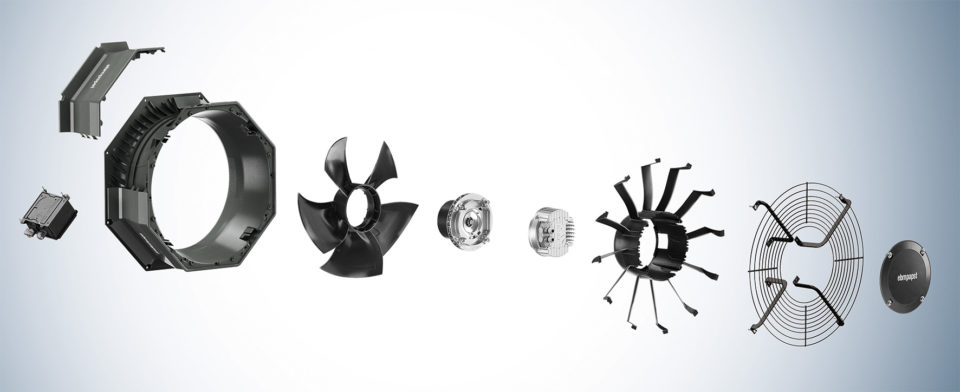From the outside, the Cilmor Distribution Center (DC) is quite impressive. The futuristic building’s horizontal ellipse is nestled in the South African soil, presenting its metal cladding to the sun as if it were a lizard. However, the heat must not penetrate into the seemingly infinite rows of high bays on the inside. After all, they house the cheese, juices, meat products, and other perishable goods of around 500 suppliers that are waiting to begin their journey to the showcases of Shoprite and Checkers stores.
At the highest point of the roof supported by steel beams, the building measures 22 meters and its widest point is 144 by 123 meters. These dimensions are gigantic for a reason. With 2,700 stores and 15,000 employees, the Shoprite Group is the largest on the African continent. The Group centralized its distribution chain upon opening the warehouse in 2018. This means storing food with a wide range of temperature requirements under one roof.

Companies that want to cool a facility of its dimensions efficiently and create a pleasant working climate must overcome technical challenges. (Photo | ebm-papst)
With a goal of this magnitude, it is not easy to create the ideal climate for all goods. The cooling system must be extremely clever. To achieve this, Cilmor DC is divided into three zones. Two have -28 °C freezers measuring 4,500 square meters each and the third 12,000 square meter cooling zone holds the temperature at 1 °C.
Wanted: economical cooling
That keeps things fresh. But when so much space is being cooled, noise is inevitable – resulting in an unpleasant working climate. “Noise!” said Hannes Steyn, Director of GEA Refrigeration Africa (Pty) Ltd., naming the special challenge for this type of building. GEA is responsible for the entire cooling system there. Steyn explained that the highly reflective surfaces and many fans, result in a noise level that makes it unpleasant to work in the facility. Where devices make noise, lots of energy is consumed – a second hurdle for the model distribution center, considering that electricity is scarce and therefore expensive. The region does not have enough high-performance power plants.

A total of 176 AxiCool fans are attached to the evaporators to maintain the required low temperatures. (Photo | ebm-papst)
Companies that want to operate a building with these exterior dimensions at the required low temperatures with as little energy consumption and noise as possible need to establish rigorous criteria for the main sources of noise and electricity consumption. Shoprite specified the following criteria: The fans for the evaporators had to be efficient and have a maximum noise level of 48 dB(A) – no louder than a quiet night in a major city. Their reach had to be at least 28 meters with 100% speed control.
Plenty of cooling for little energy
AxiCool fans from ebm-papst meet all of these requirements. And they go even further, as Steyn said: “When it comes to airflow and reach, they exceeded our expectations.” “They” are the 176 EC AxiCool fans that generate powerful air circulation using the heat exchanger surfaces in the evaporators (Fig. 3). The AxiCool Fans that ebm-papst developed especially for commercial and industrial evaporators and air coolers have a reach of up to 63 meters and air performance of up to 24,600 cubic meters per hour. They are ideal for gigantic Cilmor DC.

AxiCool fans as of size 500 are available in two different versions: as a standard version including guide vanes and a fitting guide for the heating tape (left) and as a version with additional fan housing cover to reduce heat transfer to the cold section (right). (Photo | ebm-papst)
In both freezer sections of the Shoprite distribution center, the fixed-speed axial fans in size 800 with 1.5 kW motor ensure a constant temperature below freezing. The reason for the fixed speed in these sections is a simple one. The temperature must be a constant -28 °C, so the fans must deliver a constant airflow. In the freezing sections, the focus is not on whether the technology is quiet because employees do not work in them for long periods of time. The fans could also easily handle temperatures between -40 and +40 °C (Fig. 4).
Energy consumption is more important at the temperatures that must be maintained there. This would also be a reason for Shoprite to rely on AxiCool. Equipped with guide vanes for improved efficiency and with the special AxiBlade impeller design, they keep electricity consumption low. These impellers are made of resistant composite material. The blade geometry featuring a special profile and winglets deliver higher efficiency than conventional blades.
A further plus when it comes to saving energy: the drive in AxiCool fans. GreenTech EC motors stay cool even at maximum power, meaning that heat transfer in the freezer sections is extremely low. AxiCool can reduce power consumption by up to 46 percent. The impeller design, optimized inlet ring, and intelligent diffuser also ensure that the cooling process is extremely quiet.

Every single component contributes to the efficiency, low noise emission, and cleanliness of AxiCool fans. (Photo | ebm-papst)
The advantages of AxiCool fans are particularly useful in the cooling section of Cilmor DC because many people work there. The required speed in this area is based on the air temperature and requires the infinitely variable control function. When the required temperature is reached, it decelerates. For a gigantic warehouse facility that seldom operates at full capacity, this translates directly into savings – of money and energy.
Smoothly deflect soiling
With their quiet operation and efficiency, the fans meet two basic requirements for use in the distribution center. But another attribute is important where food is being stored: the fans must be clean. Thanks to their optimal distribution of cold air and high splash water protection (IP 54), AxiCool fans comply with the most rigorous hygiene standards. The surfaces were consciously designed to be smooth and do not have any visible screws, making another contribution to cleanliness. They make it difficult for soiling to adhere and in case of doubt, are easy to clean. This also saves water.
Time is another scarce resource that Shoprite has conserved by selecting ebm-papst fans. One reason why GEA Africa was commissioned to call for bids from cooling system suppliers was the company’s agreement to complying with the tight schedule that Shoprite had planned for completing the distribution center. ebm-papst reacted by reorganizing orders and freeing up capacity so it could produce the fans on schedule.

Leave a comment